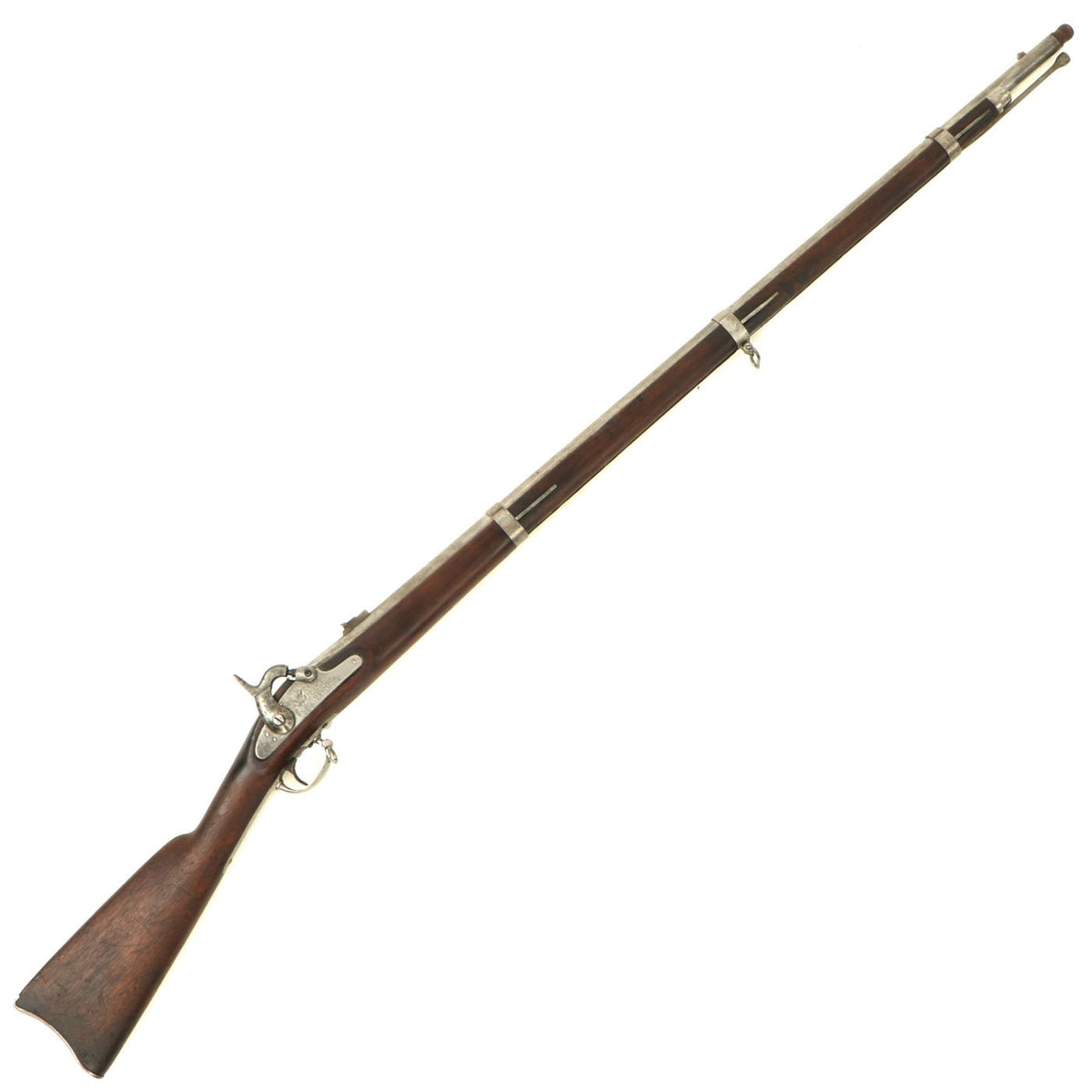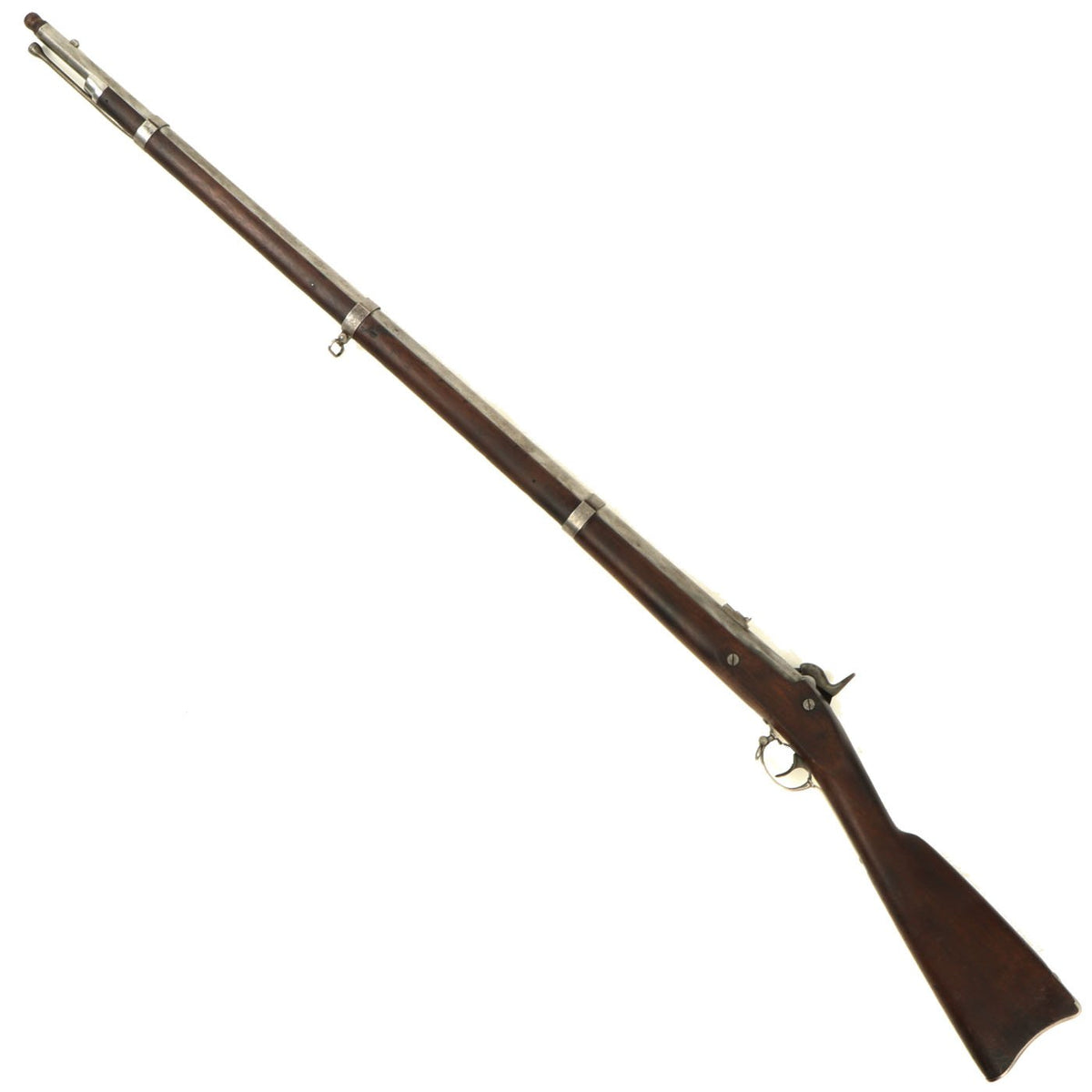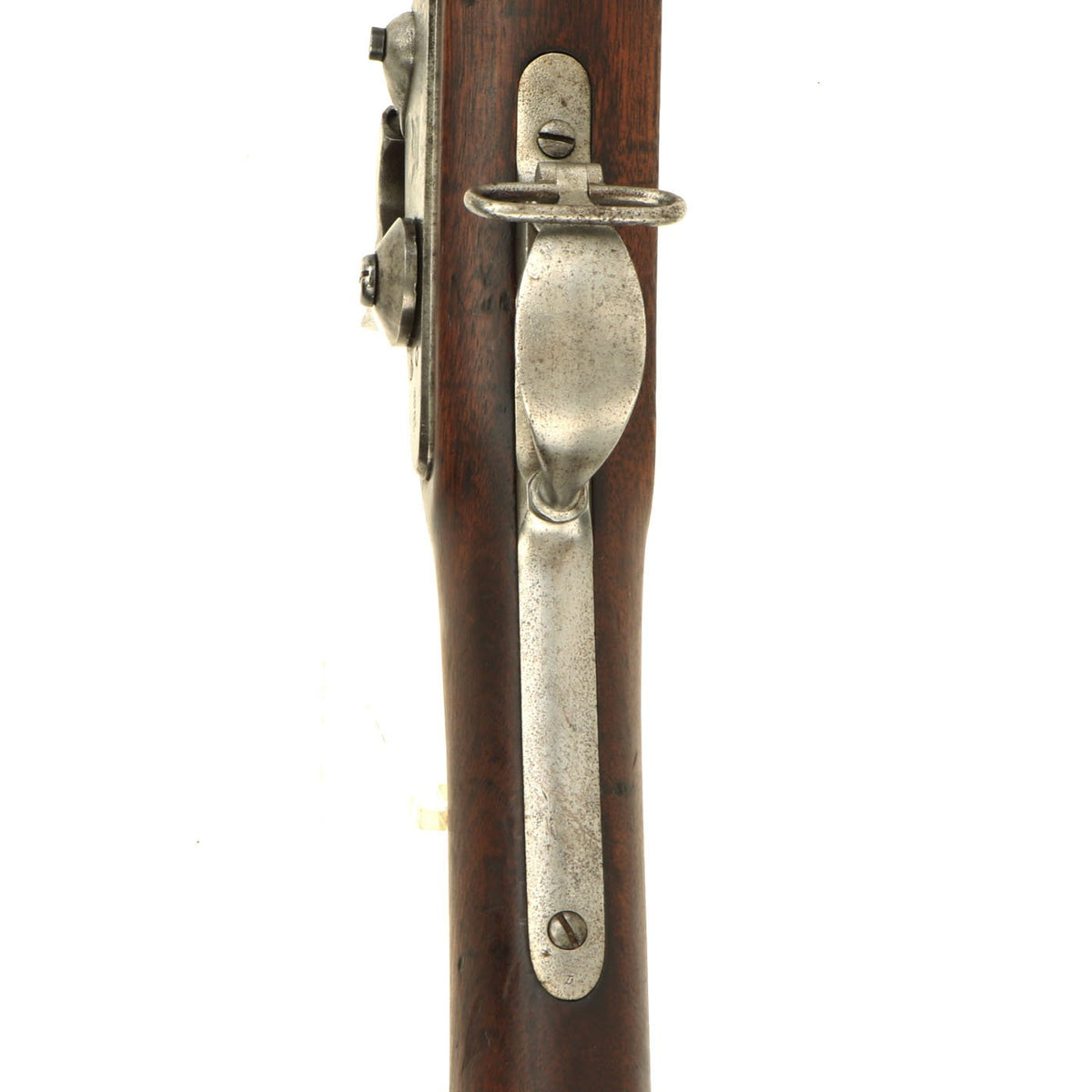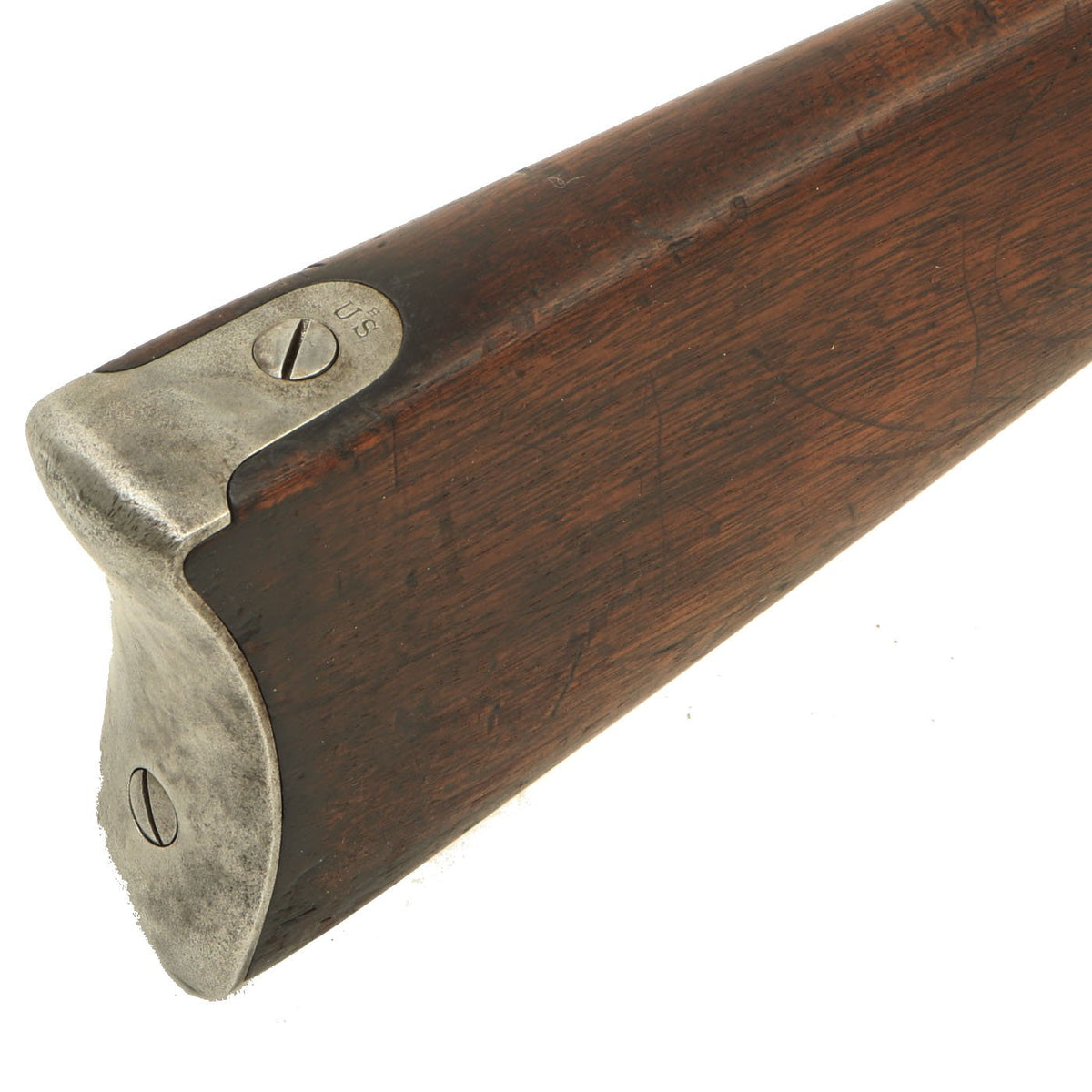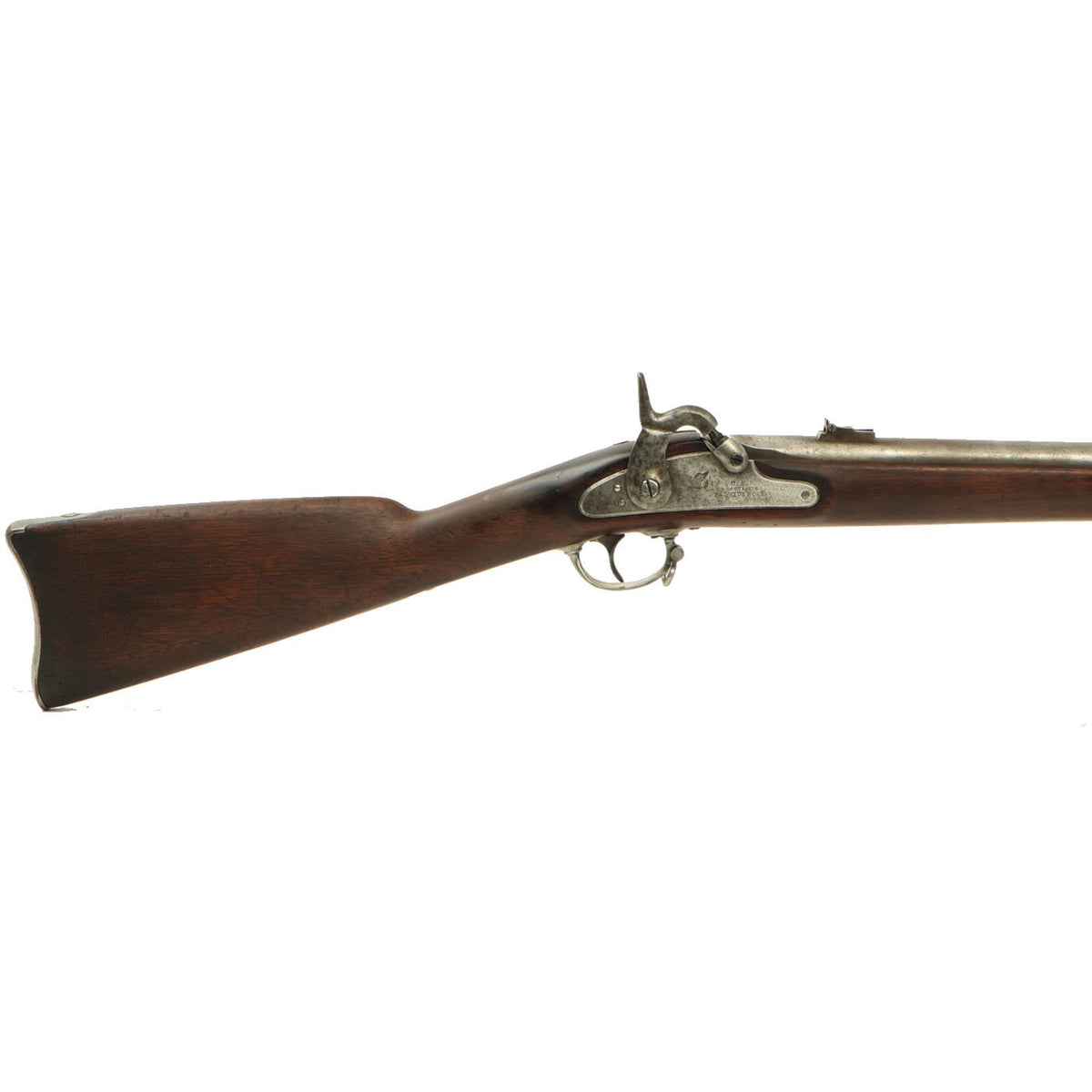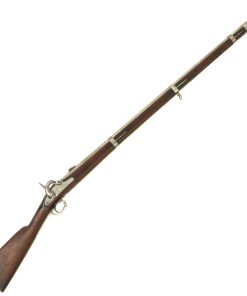Original Extremely Rare U.S. Civil War Springfield M1861 Rifled Musket by C. D. Schubarth – Dated 1862 Original Items
$ 3.250,00 $ 812,50
Original Item: Only One Available. These are extremely rare, and this is the only example we have ever seen! While there are no exact numbers, it is believed that only around FIVE HUNDRED were produced with C. D. Schubarth marked lock plates. The story of Casper Daniel Schubarth begins in Norway, where he was born in 1839, and then was apparently apprenticed to a local gunsmith. He then emigrated to the United States in 1850, settled in Massachusetts, got married, and continued his training as a gunsmith.
In 1855 he moved to Providence, Rhode Island, and opened his own two room shop, offering the standard services of a gunsmith. However he had a keen mind and loved to tinker with new designs, resulting in US Patent #32,895 being granted for an “Improvement In Breech-Loading Firearms” on July 23, 1861. It was this design that he and his financial backers hoped to produce and sell to the Federal Government. Unfortunately, that idea never came to fruition at all
The ensuing story of the failed contract, government corruption, and the hopes of a recent immigrant were unfortunately typical of the period leading up to the Civil war. While the Government had no interest in the breech loading design, they did want contractors to build M1861 Springfield Rifled muskets, which Schubarth was not set up at all to produce. However the intercession of Rhode Island Senator James F. Simmons resulted in the company being awarded a contract for these anyway, and Schubarth agreed, hoping to get his food in the door.
Simmons however was much more interested in lining his own pockets, and this resulted in Schubarth had a contract for 50,000 M1861 rifles at one point, with a $50,000 “Commission” to be paid to Senator Simmons for his assistance. This led to hesitance among Schubarth’s financial backers, which in turn led to them leaving, which in turn led to massive delays and funding issues. It then happened that the new Lincoln administration took office, and Lincoln appointed a new Secretary of War, Edwin Stanton. One of his first projects was to look into the many outstanding Federal arms contracts, which brought everything crashing down for Schubarth and Simmons.
It was found that far more Springfield Rifled muskets had been ordered than would ever possibly be needed, at around 1 million, however only 10,000 had ever been delivered. Further digging uncovered the “arrangement” that Simmons had with Schubarth, which at the time was not “technically” illegal for a contractor to bribe a member of the government, but definitely unethical. Eventually Simmons resigned, and new laws made it clearly illegal contractors to bribe government officials. As for Schubarth, it was agreed that he was taken advantage of, however in the end only 9,500 were contracted from his company, most of which ended up being part or wholly produced by subcontractors.
Research by arms collector, historian and author George Moller suggests that only about 500 of the Schubarth arms were delivered with Schubarth marked locks. It is hypothesized that the balance of the guns delivered were either marked by Providence Tool or Alfred Jenks, further suggesting that at least some of the guns Schubarth submitted were not even assembled by him, but rather were produced by other makers. Moller suggests that at least some of the Schubarth deliveries were produced by the Norwich Arms Company.
Due to the delays and issues with the 9,500 guns delivered by Schubarth, the contract was not renewed, and he returned to his gunsmithing business. He then gave the shop over to his brother in 1866, and moved to New York, passing away in 1907. A very sad tale for an ingenious gunsmith.
The Springfield Model 1861 was a Minié-type rifled musket shoulder-arm used by the United States Army and Marine Corps during the American Civil War. Commonly referred to as the “Springfield” (after its original place of production, Springfield, Massachusetts), it was the most widely used U.S. Army weapon during the Civil War, favored for its range, accuracy, and reliability.
The barrel was 40 inches long, firing a .58 caliber Minié ball, and the total weight was approximately 9 pounds. The Springfield had an effective range of 200 to 300 yards, and used percussion caps to fire (rather than the flintlocks of the 18th century, the last U.S. flintlock musket was the Model 1840). Trained troops were able to fire at a rate of three aimed shots per minute while maintaining accuracy up to 500 yards, though firing distances in the war were often much shorter. The most notable difference between the Model 1861 and the earlier Model 1855 was the elimination of the Maynard tape primer for the Model 1861 (the Maynard primer, a self-feeding primer system, was unreliable in damp weather, and the priming mechanism was expensive and time-consuming to produce). Further, unlike the Model 1855, the Model 1861 was never produced in a two-banded “short rifle” configuration.
The Springfield was aimed using flip-up leaf sights. The sight had two leaves, one for 300 yards and the other for 500 yards, and with both leaves down, the sight was set for a range of 100 yards. By contrast, the British Pattern 1853 Enfield, favored by the Confederates, utilized a ladder-sight system with 100 yard increments, using steps from 100 to 400 yards and a flip up ladder for ranges beyond 500 yards. While the Enfield’s sights did allow finer range settings, the Springfield’s simple leaves were more rugged and were less expensive to produce. The Enfield’s sights extended to 900 yards (and further, on later models), compared to the 500 yard maximum range of the Springfield’s sights. Realistically, though, hitting anything beyond 600 yards with either weapon was mostly a matter of luck. While the sight designs were very different, the two weapons were otherwise very similar, and had very similar effective ranges.
The Springfield Rifle cost $20 each at the Springfield Armory, where they were officially made. Overwhelmed by the demand, the armory opened its weapons patterns up to twenty private contractors, including C. D. Schubarth of Providence, Rhode Island. As stated previously, they were eventually only to deliver 9,500 rifles under contract, and only about 500 bore the Schubarth marked lock plates.
The Model 1861 was relatively scarce in the early years of the Civil War (many troops were still using Model 1842 smoothbored muskets and Model 1816/1822 muskets converted to percussion cap primers, both in .69 caliber). It is unlikely that any of these were available for use in the First Battle of Bull Run. However, over time, more and more regiments began receiving Model 1861 rifled muskets, though this upgrade appeared somewhat quicker in the Eastern Theater of Operations. Over 1,000,000 Model 1861 rifles were produced, with the Springfield Armory increasing its production during the war by contracting out to twenty other firms in the Union. The number of Model 1861 muskets produced by the Springfield Armory was 265,129 between January 1, 1861 and December 31, 1863. According to United States Muskets, Rifles and Carbines by Arcadi Gluckman Colonel Infantry, United States Army, published 1949.
After the war ended, many model 1861 and 1863 rifled muskets were modified to a breech loading actions with new metallic cartridges. With these modifications, the basic 1861 evolved into the Springfield Model 1873 which served the US until being replaced in the 1890s by modern breech loading rifles chambered for new smokeless powder rounds that were far superior to the Model 1873.
This example however was not converted, and is still in the original configuration. It is dated 1862 on the lock plate tail, and also has an Eagle stamped into the lock in front of the hammer, and to the right of that U.S. / C. D. SCHUBARTH / PROVIDENCE.. The markings on the lock are still clear, though there is a bit of peppering on the lock plate. This rifled musket does not look to have seen extensive use during the war, or afterwards. The nocks form still clearly shows the proof marks V / P / Eagle’s Head, and there is even still the 1862 date on the top!
The stock on this piece is in great shape, with a lovely red brown color, and intact stock cartouche on the left hand side by the lock screws. There are some gouges and missing chunks on the fore stock, as expected for a rifled musket of this age, but nothing out of the ordinary. There is a repaired crack running from the barrel tang to the lock, a very common place for them.
The metalwork overall shows only light wear, with some overall speckling from surface oxidation. The bore still shows the original three groove rifling, with machining marks still visible, and a partly bright finish. There is very little powder burn around the cap bolster, and the nipple is still in very good shape. It doesn’t look like this rifle was fired much at all. The lock is fully functional, holding at half cock and firing at full. The original three leaf rear sight is present and still fully functional, though the long range leaf sticks a bit. The upper and lower bands still have their U markings, with a U.S. on the butt plate tang. The ramrod is the correct and original tulip type with an enlarged shank. Both sling swivels are still present.
This is a fantastic chance to pick up a very good condition Civil War Contract Rifled musket by a extremely rare maker! Fully cleaned and ready to display!
Specifications-
Year of Manufacture: 1862
Caliber: .58″
Cartridge Type: Minie Ball and Powder
Barrel Length: 40 Inches
Overall Length: 56 Inches
Action type: Side Action Lock
Feed System: Muzzle Loaded
NOTE: International orders of antique firearms MUST be shipped using UPS WW Services (courier). USPS Priority Mail international will not accept these.
Fast Shipping with Professional Packaging
Thanks to our longstanding association with UPS FedEx DHL, and other major international carriers, we are able to provide a range of shipping options. Our warehouse staff is expertly trained and will wrap your products according to our exact and precise specifications. Prior to shipping, your goods will be thoroughly examined and securely secured. We ship to thousands clients each day across multiple countries. This shows how we're dedicated to be the largest retailer on the internet. Warehouses and distribution centres can be located throughout Europe as well as the USA.
Note: Orders with more than one item will be assigned a processing date depending on the item.
Before shipping before shipping, we'll conduct a thorough inspection of the items you have ordered. Today, the majority of orders will be delivered within 48 hours. The delivery time will be between 3-7 days.
Returns
The stock is dynamic and we cannot completely manage it because multiple stakeholders are involved, including our factory and warehouse. So the actual stock may alter at any time. It's possible that you may not receive your order once the order has been made.
Our policy is valid for a period of 30 days. If you don't receive the product within 30 days, we are not able to issue a refund or an exchange.
You can only return an item if it is unused and in the same state as the day you received it. You must have the item in its original packaging.
Related products
Uncategorized
Uncategorized
Australian WWII Owen MK1 Machine Carbine SMG Custom Fabricated Replica with Sling Original Items
Uncategorized
Uncategorized
Uncategorized
Uncategorized
Uncategorized
Uncategorized
Uncategorized
Uncategorized
Uncategorized
Angolan Rebel 1970s era 60mm Inert Display Mortar from Angolan Civil War Original Items
Uncategorized
Uncategorized
Uncategorized
Uncategorized
Armoured Fighting Vehicles of the World: AFVs of World War One (Hardcover Book) New Made Items
Uncategorized
Band of Brothers ORIGINAL GERMAN WWII Le. F.H. 18 10.5cm ARTILLERY PIECE Original Items
Uncategorized
Armored Burgonet Helmet & Polearm from Scottish Castle Leith Hall Circa 1700 Original Items
Uncategorized
